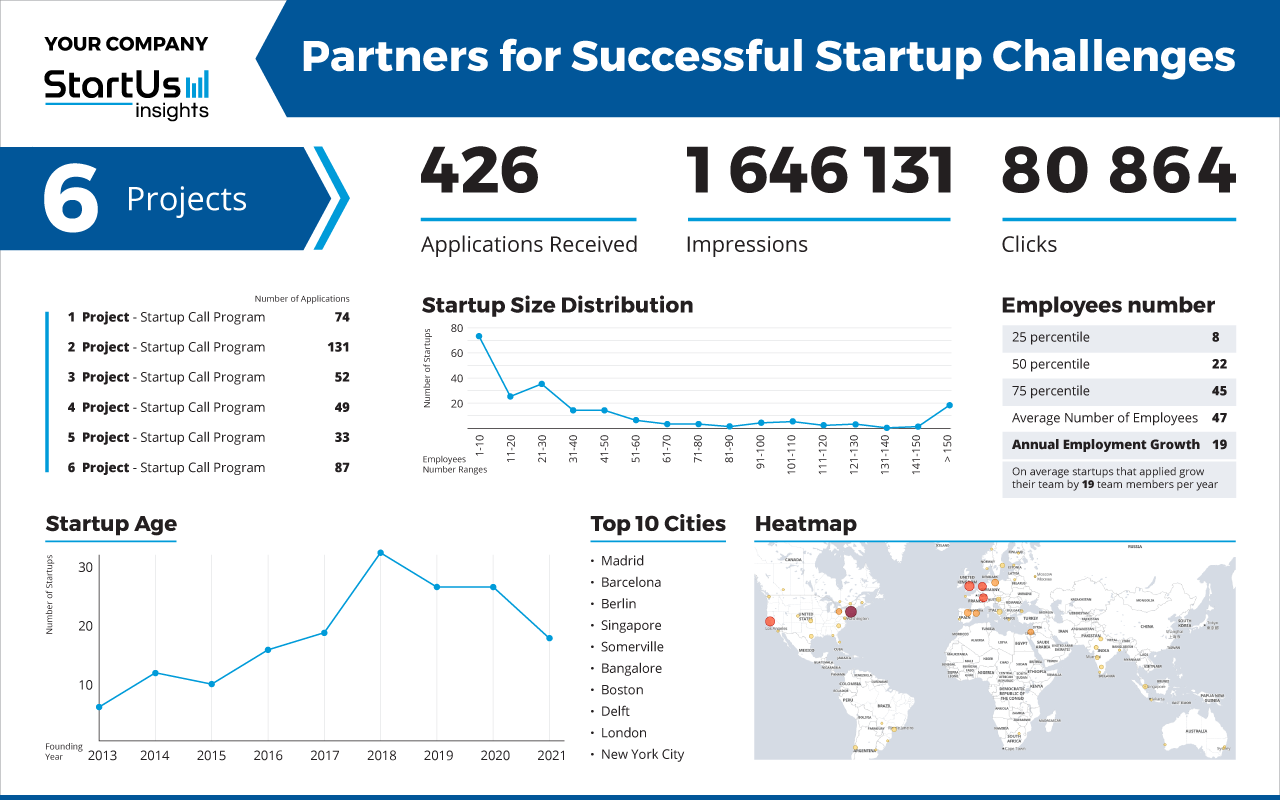Like biological species, businesses go extinct when they can’t keep up with the changing environment. Both species and businesses can impact some aspects of their environments, but largely at the mercy of external factors. Hence continuously adapting and finding a niche is critical to long-term survival. Species, with the exception of humans, usually don’t have insights into how the environment will change in the future. However, thanks to environmental scanning, businesses can get these insights and ensure their long-term competitiveness.
Today, in an age where new technologies and startups emerge faster than ever before, companies need to always look over their shoulders. To maintain their market leadership, it’s vital to scan and explore new technologies and markets. Moreover, in a rapidly changing environment, it is imperative to do so routinely in order not to miss any opportunities.

As an integral component of environment scanning, startup scouting identifies startups that create opportunities and mitigate threats for you.
What is Environmental Scanning?
Environmental scanning is a process by which businesses collect and analyze information about the environment they are operating in. If the term environment seems broad, that’s because it is. In the process, innovation managers try to get data on virtually any parameter that may have any impact on their companies. Although the process itself isn’t new, with open innovation, companies now have much more data sources to rely on.
An effective environment scanning process requires the routine collection of data from both internal and external sources. Internal data sources include customer relationship management (CRM) systems, warehouse management systems (WMS), as well as human information collated by the human resources (HR) department, for example. The scope of external data sources, however, is even wider. It includes information on economic conditions, emerging technologies, competitor intelligence, geo-political events, the impact of climate change, and regulatory developments, among others.
Because of their comprehensive nature, environment scanning strategies integrate customer intelligence, competitor intelligence, technology scouting, and other innovation management principles. Here are three popular models companies use to scan and analyze their environments:
- SWOT: One of the oldest and most popular models, it involves analyzing the Strengths, Weaknesses, Opportunities, and Threats that a company faces. Of these, strengths and weaknesses are generally internal factors, whereas the others are external.
- PESTLE: This method categorizes the environment into Political, Economical, Social, Technological, Legal, and Environmental trends. Not to cause any confusion: the last category here is about the impact of weather, climate, and pollution trends.
- QUEST: Short for Quick Environmental Scanning Technique, it is quicker and less expensive than other strategies. This model involves recreating a large number of scenarios to evaluate strategic options.
4 Benefits of Routine Environmental Scanning
1. Enables Proactive Threat Management
Companies that do not innovate fast enough are always at risk of losing their market position or, worse, going out of business. Threats to companies come from internal inefficiencies as well as new technologies, emerging startups, and changing regulatory landscapes. By identifying these threats early, environmental scanning allows companies to mitigate them without incurring large costs.
2. Enhances Market Adaptability
Another benefit of identifying trends faster is the flexibility it affords companies. Generally, companies that innovate largely internally are slow to catch up on new technologies or customer preferences. Companies that leverage environmental scanning, on the contrary, are able to incorporate these trends into their production cycles and other business operations quicker. This significantly improves their market adaptability by keeping them more agile.
3. Improves Organizational Efficiency
As discussed above, environmental scanning looks for weaknesses or internal efficiencies as well. This allows companies to figure out which process improvements take priority, depending on their impact on the bottom line. Further, environmental scanning also provides insights on processes that work best for their competitors. Incorporating these further improves the organizational efficiency of a business.
4. Optimizes Sales and Marketing Campaigns
Customers and competitors constitute two major sources of insights for environmental scanning. They allow a business to understand what works for its competitors’ products and services and what the customers like about it. Equally as important, it provides insights into how the competitors market their products and to which demographics. By bringing these insights to internal innovation teams, businesses can optimize sales and marketing campaigns without large overhead costs.
Leverage Environmental Scanning to drive Innovation
With ever more data sources available, it is hard to analyze billions of data points. Making things more complicated, much of this data is in hard-to-access or unstructured formats. Companies, however, cannot afford to take too long to identify emerging trends that have the potential to impact their business. Data-driven innovation management tools allow you to go about this effectively and fast.
Based on your innovation goals, the Big Data & Artificial Intelligence (AI)-powered StartUs Insights Discovery Platform scans millions of startups, scaleups, and news sources globally to identify threats and opportunities for you. Some of our deliverables include:
- Trend Analysis Map: A detailed classification of emerging technology trends and their subtrends
- Trend Analysis Report: Quantitative insights into top-ranked technology trends as well as exemplary startups driving these innovations
- Startup Database: Covers hundreds of relevant startups that match your innovation goals

Environmental scanning provides you data-driven insights into all internal and external factors, including other startups and companies, that impact your business.
To discover how we at StartUs Insights scan your business environment and identify threats & opportunities, get in touch today!

![AI in Automotive: A Strategic Guide for Industry Leaders [2025-2030]](https://www.startus-insights.com/wp-content/uploads/2025/03/AI-in-Automotive-SharedImg-StartUs-Insights-noresize-420x236.webp)

![AI in Healthcare: A Strategic Guide for Industry Leaders [2025-2030]](https://www.startus-insights.com/wp-content/uploads/2025/03/AI-in-Healthcare-SharedImg-StartUs-Insights-noresize-420x236.webp)




